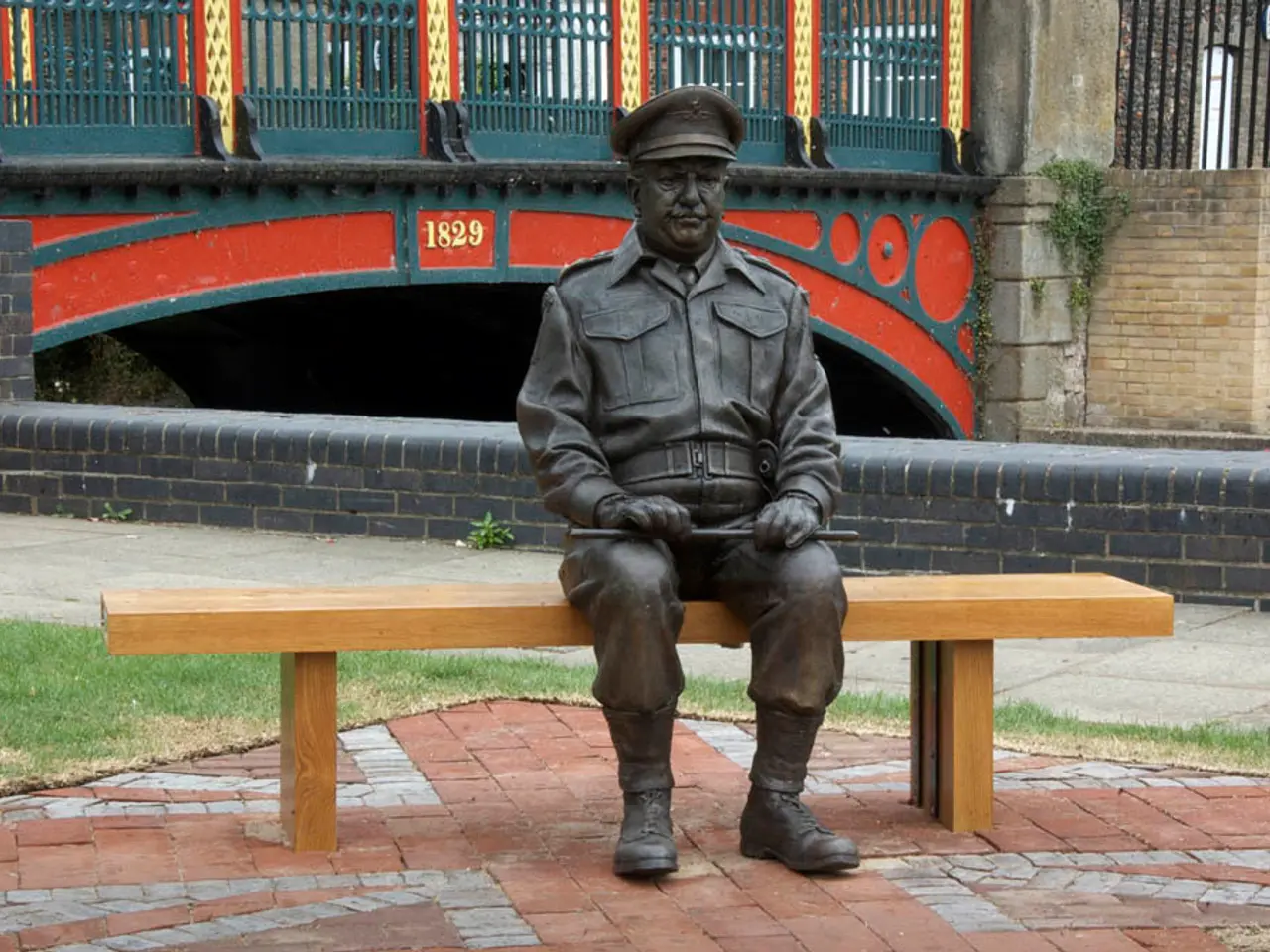Clock Description: Seth Thomas Column and Cornice Clock Profiles
A Treasured Piece of American Clockmaking History: A Seth Thomas Column and Cornice Clock
A stunning example of a Seth Thomas column and cornice clock has recently gained attention in a Tick-Talk Tuesday article. This clock, with its intricate design and rich history, offers a glimpse into the golden age of American clockmaking.
Originally placed atop an antique radio in a living room, the clock was relocated after a room redecoration. It now stands as a testament to the enduring beauty and craftsmanship of its era.
The clock is a fine representation of the Seth Thomas column and cornice style, popular in mid-19th century America and Canada West (now Ontario). Crafted prior to 1867, it reflects both aesthetic and technological advances in clockmaking during that period.
The clock features a mahogany veneer case with cove molded crest, 3⁄4 columns in painted gold, and two reverse painted doors. The upper tablet is original and showcases a hand-painted fruit bowl design, while the lower tablet features a headless eagle design. The movement, clean and running well, is visible through the dial, with a brass lyre movement adding to its charm.
The dial is a painted tin Roman Numeral dial with hand-decorated flower spandrels in all four corners. The hour and minute hands are in an Ogee style and original to the clock. The clock stands 32'' tall, 18'' wide, and 5'' deep, making it a striking presence in any room.
The clock, a Seth Thomas time and strike eight-day weight-driven column and cornice clock, was sold by the R.W. Paterson Company of Canada West. It also bears an authentic interior label with the name J. M. Paterson, Hamilton, Canada West, further cementing its provenance.
Seth Thomas began clockmaking around 1817, producing wooden movement shelf clocks featuring designs like the "pillar and scroll" style. By the 1840s, the company had evolved to manufacture mass-produced clocks with brass movements and elegant wooden cases, including column and cornice models. Between 1841 and 1867, Seth Thomas clocks transitioned to more durable brass mechanical movements and increasingly refined wooden case designs, making them popular in American and Canadian homes.
During this period, Canada West (now Ontario) was a growing market for American goods, including Seth Thomas clocks. The reliability and quality reputation of Seth Thomas clocks made them popular in Canada West, contributing to the spread of American clock styles and manufacturing techniques in the region.
Today, Seth Thomas column and cornice clocks from this early period are collectible antiques. Their value stems from their craftsmanship, historic role in North American clockmaking, and stylistic representation of mid-19th century tastes. Identifying authentic pieces from the 1841-1867 era involves examining wooden or brass movements, case styles, and markings consistent with Seth Thomas manufacturing practices of the time.
This particular clock, with its original tablet designs, hand-painted details, and clean, running movement, is a testament to the enduring quality of Seth Thomas clocks and the enduring appeal of these classic timepieces.
Read also:
- Fresh dwellings in Solingen: advice for novices and former residents
- Revitalize Your Home Quickly and Effectively with Minimal Work and Maximum Results
- Experience a warmth revolution as these warming items invigorate your body and rejuvenate your spirit, perfect for those struggling with chilly temperatures.
- Rapid Bathroom Transformation: Simple and Swift Solutions for a Renovated Look




